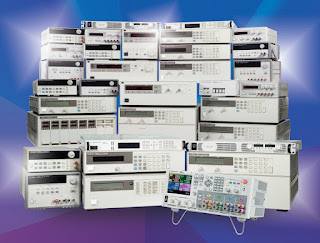In my previous posting “More on Early Power Supply
Preregulator Circuits” SCRs served to provide basically line frequency switched-mode
operation for efficient power conversion and regulation in earlier mixed-topology
DC power supply designs. Now that high frequency switched-mode power conversion
circuits have long been highly refined, are physically much smaller, and are
extremely cost effective they have become the game-changer. They can be used as
a preregulator for mixed-topology DC power supply designs, as well as the
complete DC power supply from the AC input to the regulated DC output, right?
Well almost “yes”. They do bring all those of benefits over line frequency
operation. As they can span a much wider range of AC input another benefit they
bring is to eliminate the need for a complex AC line switch arrangement for the
wide range of AC voltages needed.
It was recognized that one downside of high frequency
switched-mode conversion is the AC input suffered from rather low power factor
(PF). PF is the ratio of the real power to the apparent power. Low PFs cause
increased losses in the AC power distribution system. Not only was it low, it
was very non-linear, drawing current having high levels of odd harmonics. It
turns out the third harmonic in particular can be additive, causing excessive
current through the neutral line of AC power distribution systems. The reason
for the low and non-linear PF is that the AC input of a high frequency
switched-mode conversion circuit is a diode bridge feeding a large, high
voltage, bulk storage capacitor, as shown in Figure 1. This non-linear load
draws large peaks of current over short portions of the AC line period.
Figure 1: Non-linear AC load input of a high frequency
switch-mode power converter circuit
As more and more electronic equipment was making use of
switch-mode DC power supplies, minimum PF standards were established for
products above a certain power rating, to avoid causing problems with the AC
power distribution system. To meet the standards switch-mode DC power supplies
above a certain power rating have had to incorporate power factor correction
(PFC) into their AC inputs. While a few different approaches can be taken for
adding PFC, most switch-mode DC power supplies incorporate a specialized
switched-mode boost converter stage for providing active PFC. The active PFC
stage is placed between the input rectifier bridge and bulk storage capacitor
as depicted in Figure 2. An active PFC stage is designed to draw AC current in
phase and in proportion to the AC voltage, typically providing PFs in a range
of 0.95 to 0.99, which is comparable to a nearly purely resistive load!
Figure 2: Active PFC circuit in typical switched-mode DC
power supply










